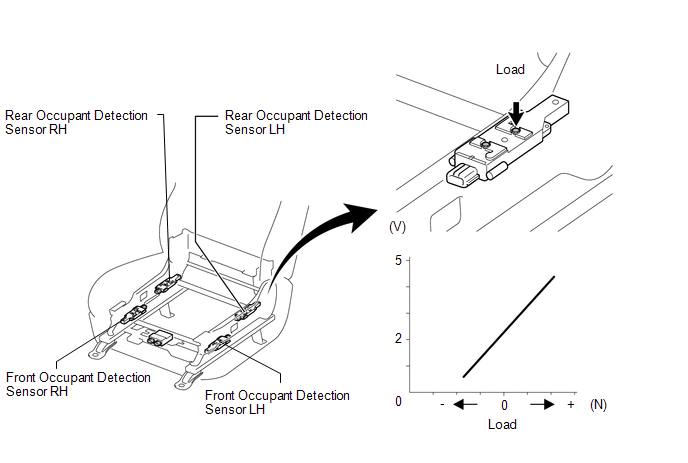SYSTEM DESCRIPTION 1. GENERATION DESCRIPTION (a) The occupant classification system determines whether the front passenger seat is occupied by an adult or child (with child seat) or is unoccupied, based on the load that is applied to the front passenger seat and whether the seat belt is buckled. The system restricts the deployment of the front passenger airbag, front passenger side airbag, and front passenger seat belt pretensioner in accordance with this judgment. The result is informed to the driver through the front airbag ON/OFF indicator illumination. 2. SYSTEM CONFIGURATION (a) This system consists of the occupant classification ECU, occupant detection sensors, front airbag ON/OFF indicator, passenger side seat belt buckle switches, and center airbag sensor. 3. OCCUPANT DETECTION SENSOR (a) The occupant detection sensors are installed on 4 brackets, which connect the seat rail and the seat frame. The resistance values of these sensors, which vary in accordance with the load that acts on the brackets, are transmitted to the occupant classification ECU as signals. Upon receipt of the signals, the ECU determines the front passenger seat occupant conditions.  |
Toyota Tundra Service Manual > Blind Spot Monitor System: Short to GND or Open in Buzzer (C1ABE)
DESCRIPTION DTC C1ABE is stored when the blind spot monitor sensor LH detects a short to ground or open in the RCTA buzzer (blind spot monitor buzzer) circuit. DTC No. DTC Detection Condition Trouble Area C1ABE Both of the following conditions are met: The blind spot monitor system is on The blind s ...